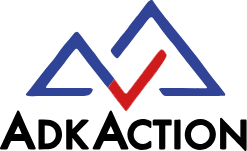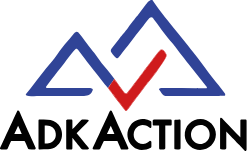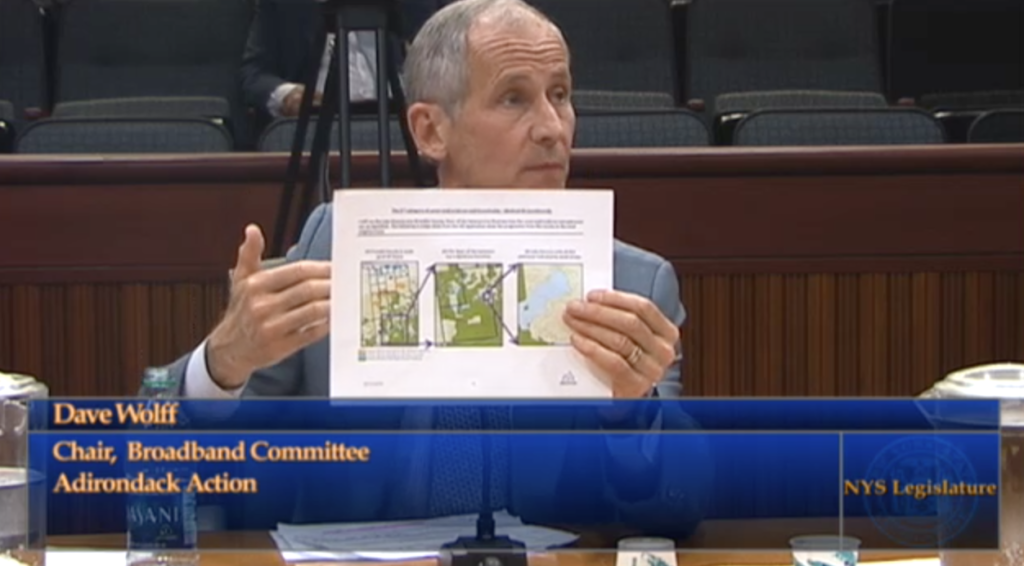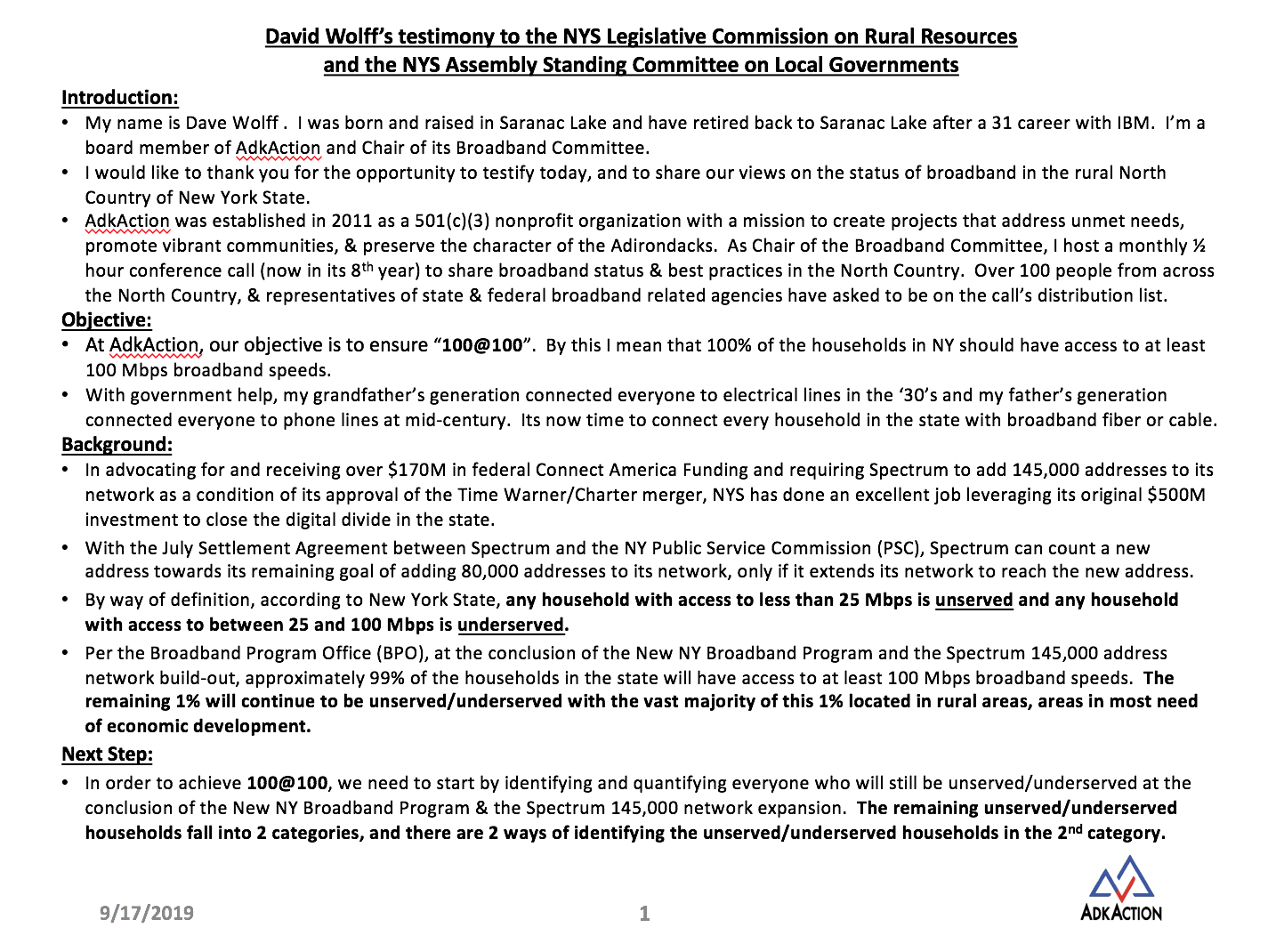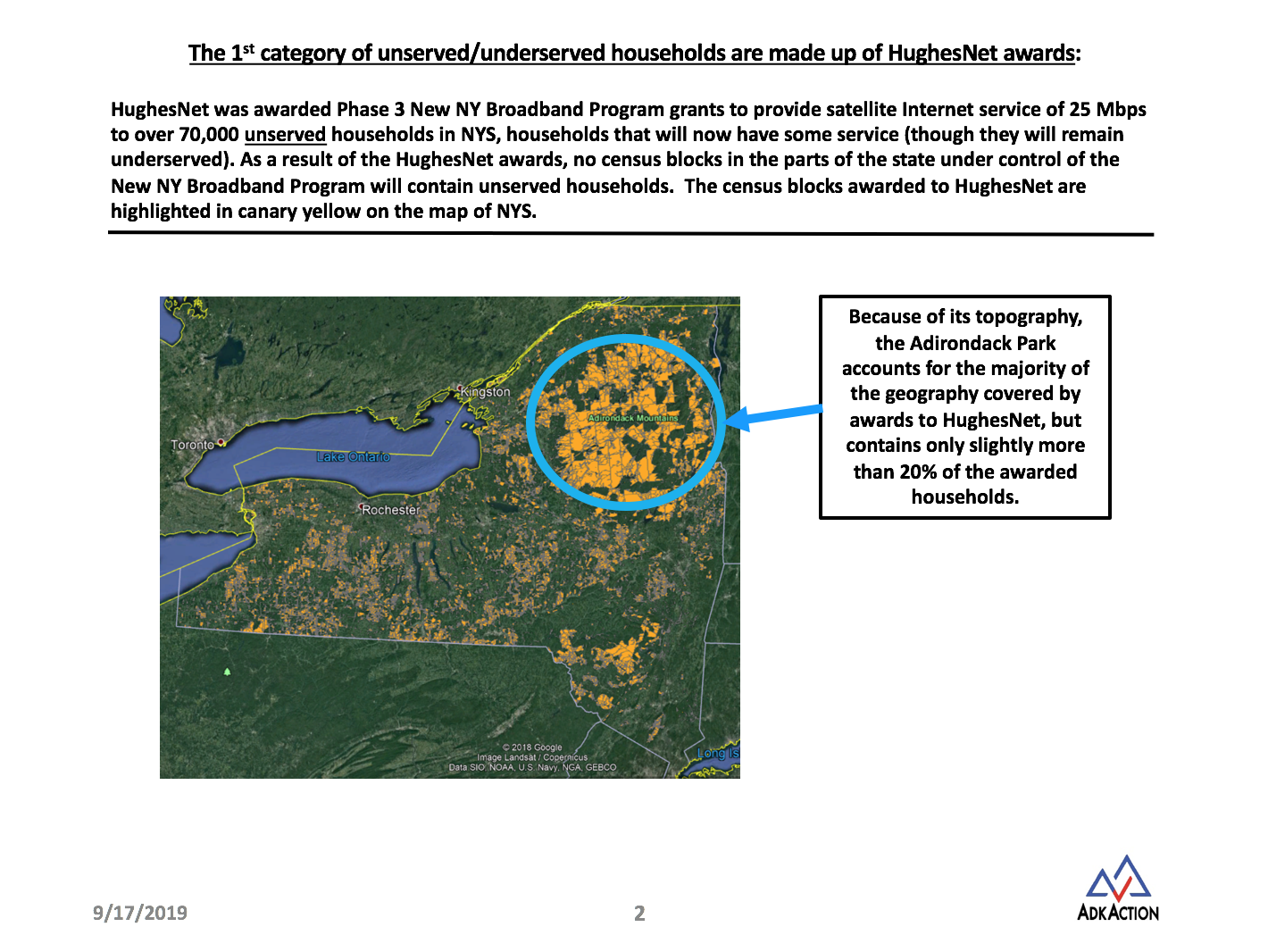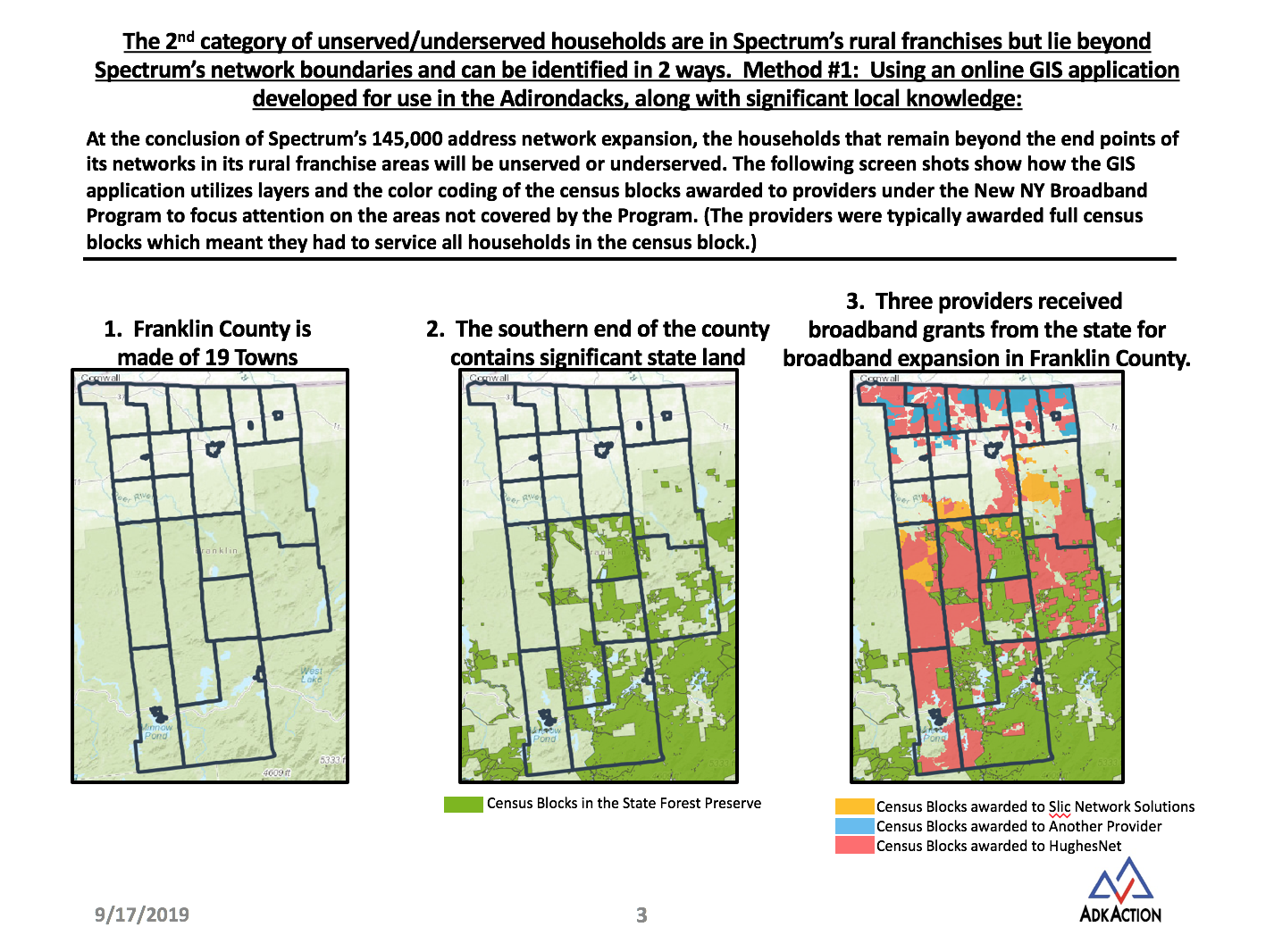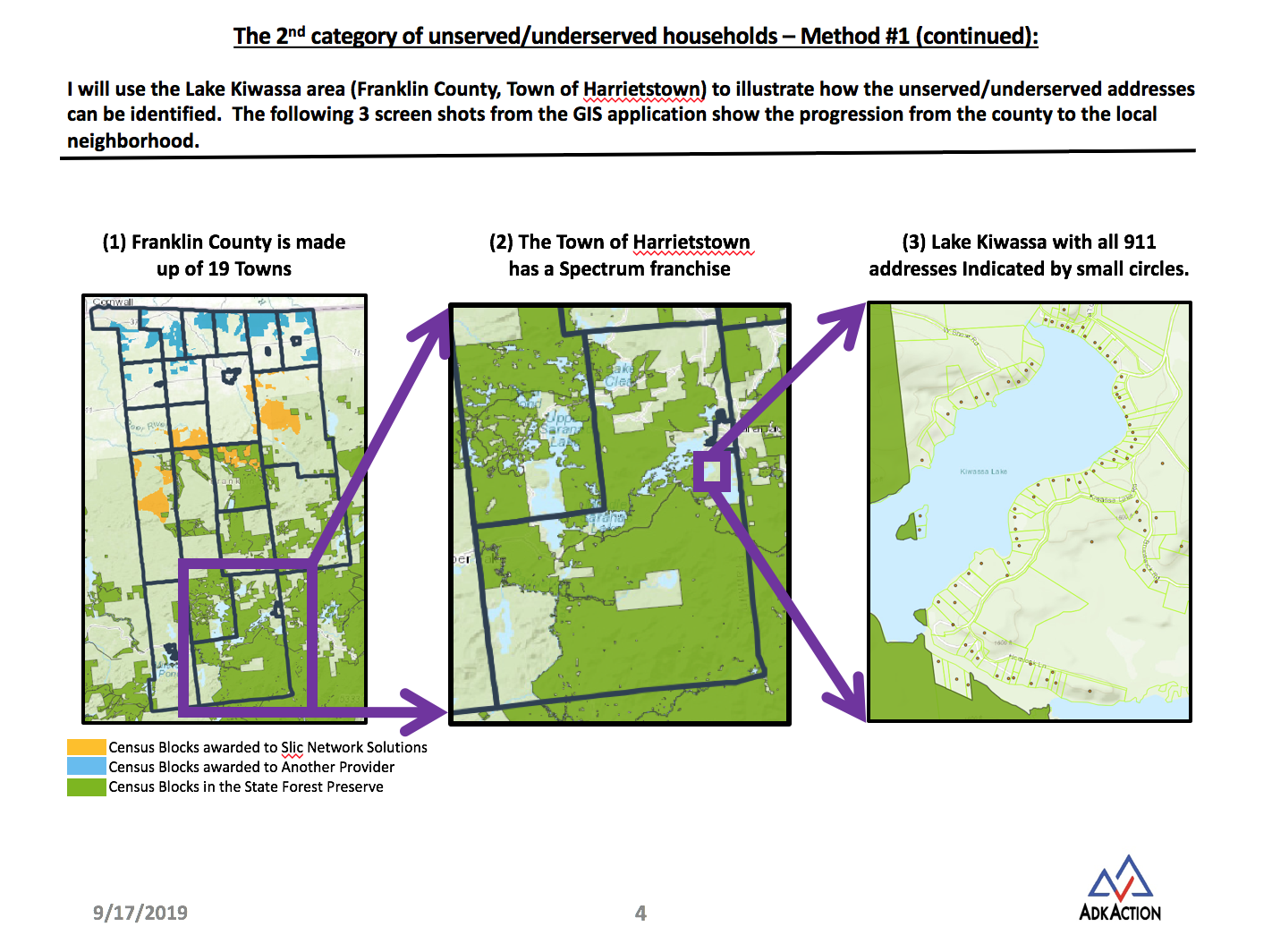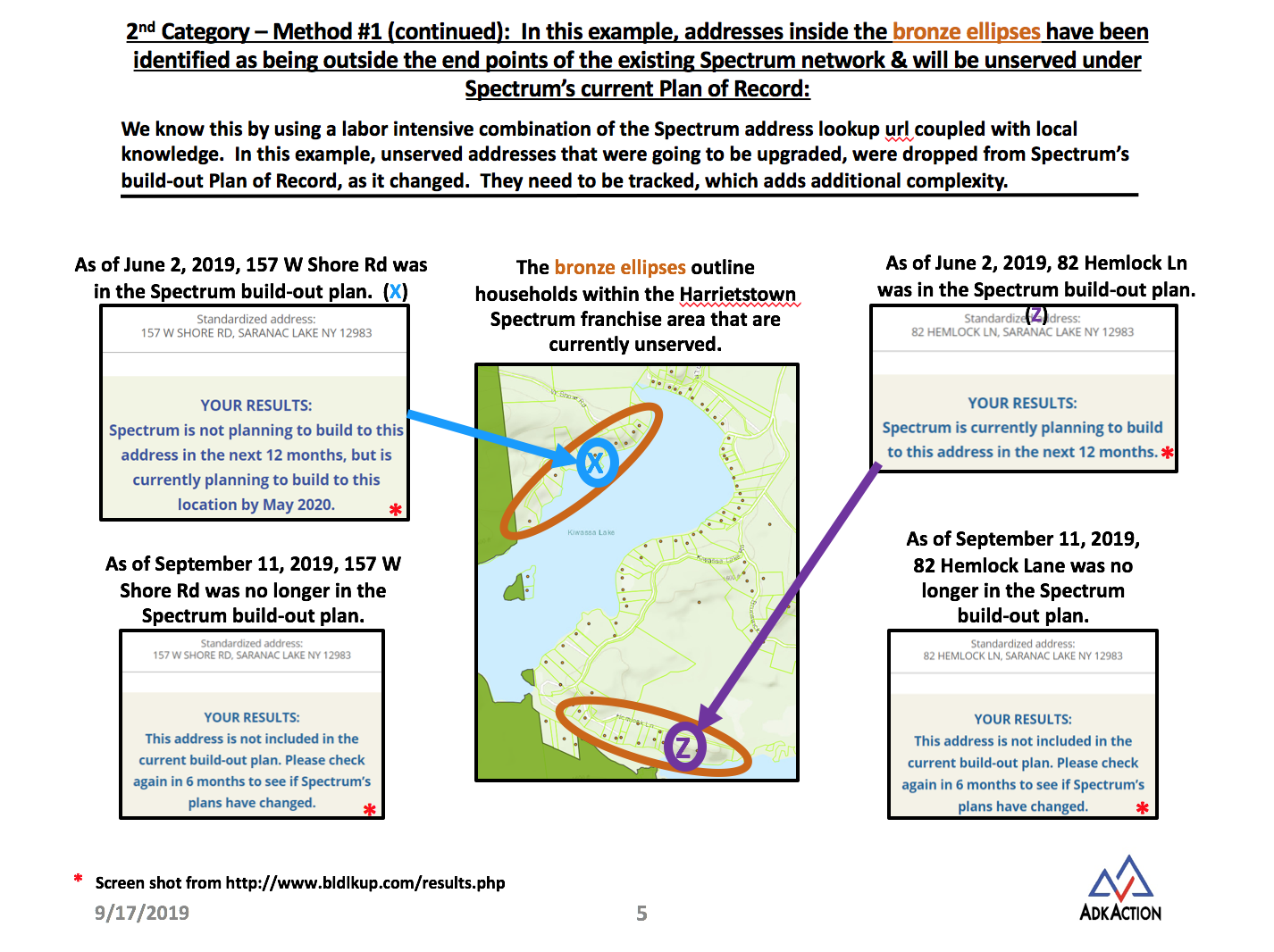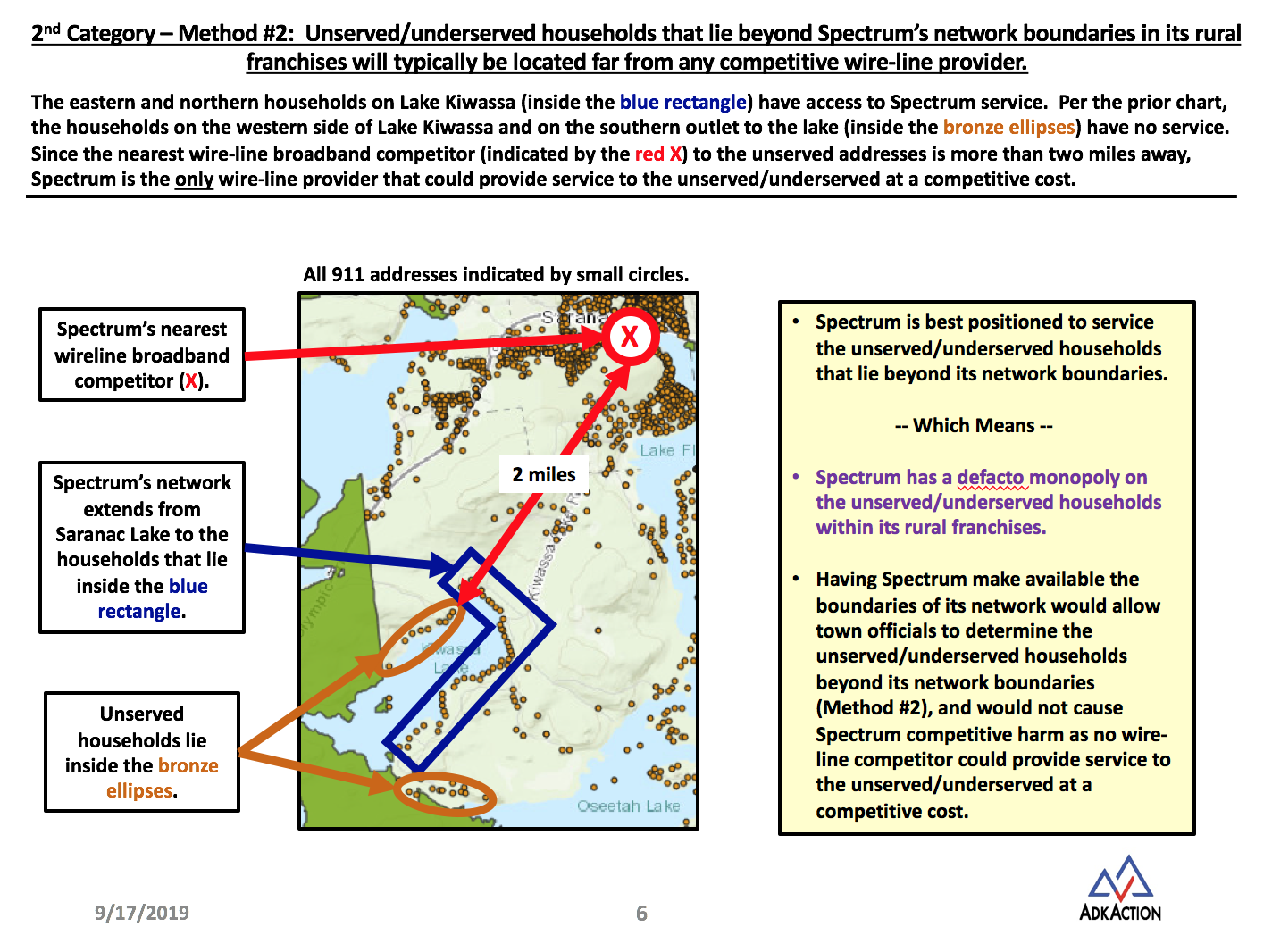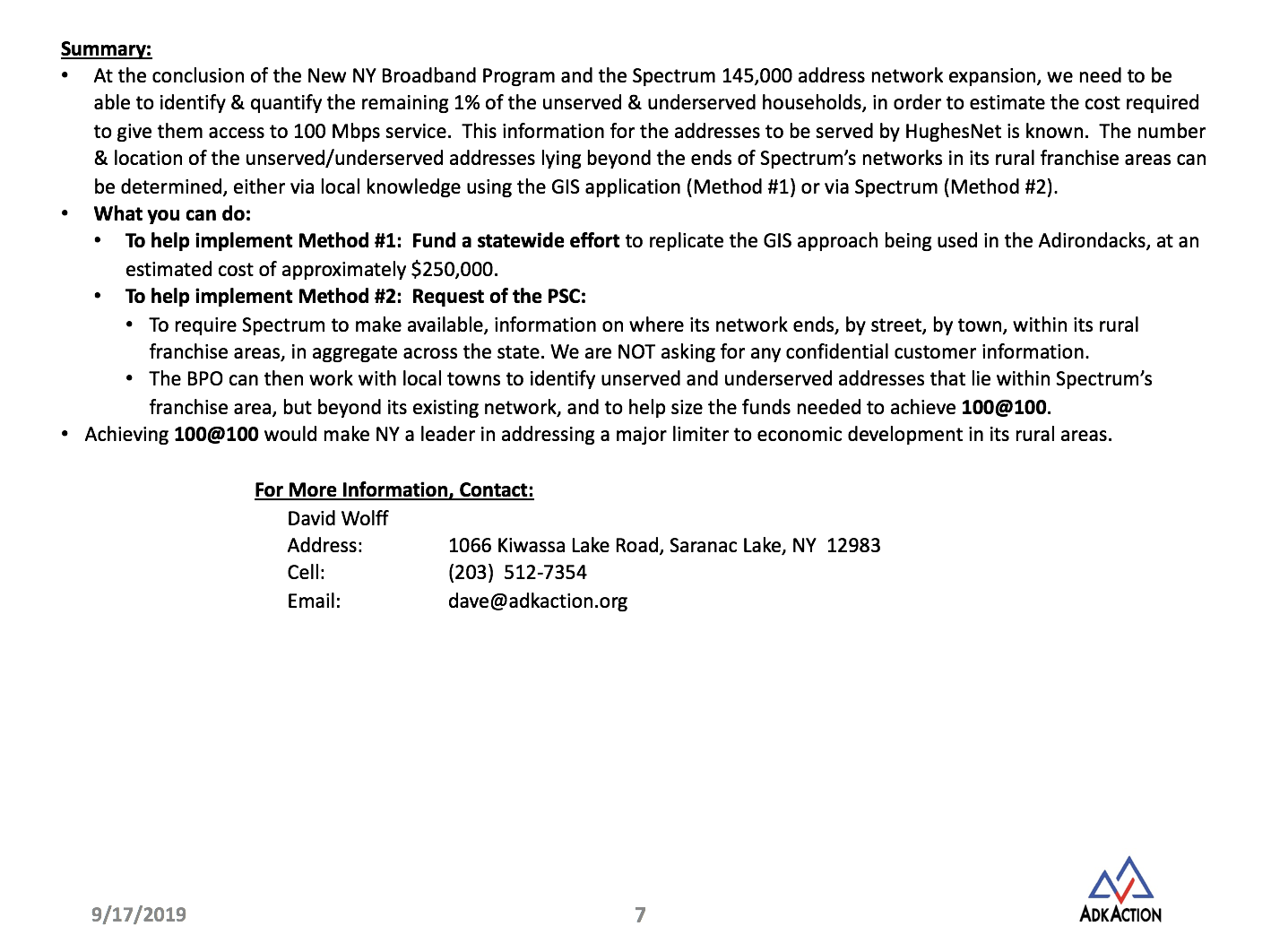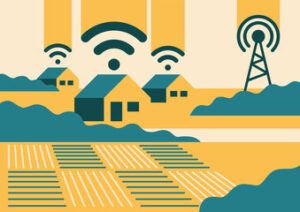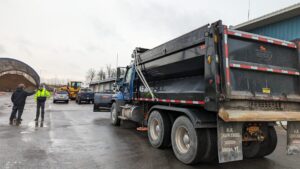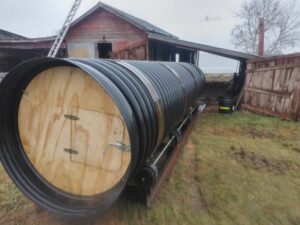On September 17th, AdkAction board member, Dave Wolff, testified at the NYS Senate and Assembly Public Hearing on the status of rural broadband in NYS. You can see the video of his testimony here. Dave started off his testimony with the objective of AdkAction in regards to broadband access–our objective is to ensure “100@100”. This means that 100% of the households in NY should have access to at least 100Mbps broadband speeds. Dave explained that with government help, his grandfather’s generation connected everyone to electrical lines in the ’30s and his father’s generation connected everyone to phone lines at mid-century. It’s now time to connect every household in the state with broadband fiber or cable.
After his introduction, Dave went on to share a bit of background information. In advocating for and receiving over $170M in federal Connect America Funding and requiring Spectrum to add 145,000 addresses to its network as a condition of its approval of the Time Warner/Charter merger, NYS has done an excellent job leveraging its original $500M investment to close the digital divide in the state. With the July Settlement Agreement between Spectrum and the NY Public Service Commission (PSC), Spectrum can count a new address towards its remaining goal of adding 80,000 addresses to its network, only if it extends its network to reach the new address.
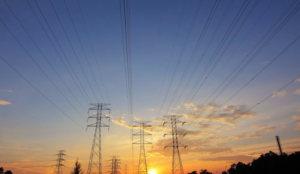
By way of definition, according to New York State, any household with access to less than 25 Mbps is unserved and any household with access to between 25 and 100 Mbps is underserved. Per the Broadband Program Office (BPO), at the conclusion of the New NY Broadband Program and the Spectrum 145,000 address network build-out, approximately 99% of the households in the state will have access to at least 100 Mbps broadband speeds. The remaining 1% will continue to be unserved/underserved with the vast majority of this 1% located in rural areas, areas in most need of economic development.
Dave then outlined the next steps to be taken to address this issue. In order to achieve 100@100, we need to start by identifying and quantifying everyone who will still be unserved/underserved at the conclusion of the New NY Broadband Program & the Spectrum 145,000 network expansion. The remaining unserved/underserved households fall into 2 categories, and there are 2 ways of identifying the unserved/underserved households in the 2nd category.
During his testimony, Dave explained that the 1st category of unserved/underserved households is made up of HughesNet awards. HughesNet was awarded Phase 3 New NY Broadband Program grants to provide satellite Internet service of 25 Mbps to over 70,000 unserved households in NYS, households that will now have some service (though they will remain underserved). As a result of the HughesNet awards, no census blocks in the parts of the state under control of the New NY Broadband Program will contain unserved households. The census blocks awarded to HughesNet are highlighted in canary yellow on the map of NYS on page 2 of the presentation below.
The 2nd category of unserved/underserved households are in Spectrum’s rural franchises but lie beyond Spectrum’s network boundaries and can be identified in 2 ways. Method #1: Using an online GIS application developed for use in the Adirondacks, along with significant local knowledge: At the conclusion of Spectrum’s 145,000 address network expansion, the households that remain beyond the endpoints of its networks in its rural franchise areas will be unserved or underserved. The screenshots included on page 3 of the presentation below show how the GIS application utilizes layers and the color-coding of the census blocks awarded to providers under the New NY Broadband Program to focus attention on the areas not covered by the Program. (The providers were typically awarded full census blocks which meant they had to service all households in the census block.)
Dave concluded his testimony after sharing the examples on pages 4, 5, & 6 of his presentation. At the conclusion of the New NY Broadband Program and the Spectrum 145,000 address network expansion, he explained that we need to be able to identify & quantify the remaining 1% of the unserved & underserved households, in order to estimate the cost required to give them access to 100 Mbps service. This information for the addresses to be served by HughesNet is known. The number & location of the unserved/underserved addresses lying beyond the ends of Spectrum’s networks in its rural franchise areas can be determined, either via local knowledge using the GIS application (Method #1) or via Spectrum (Method #2).
Board member, Dave Wolff concluded with a few action items for officials in attendance of the NYS Senate and Assembly Public Hearing on the status of rural broadband in NYS.
What’s next:
- To help implement Method #1: Fund a statewide effort to replicate the GIS approach being used in the Adirondacks, at an estimated cost of approximately $250,000.
- To help implement Method #2: Request of the PSC:
- To require Spectrum to make available, information on where its network ends, by street, by town, within its rural franchise areas, in aggregate across the state. We are NOT asking for any confidential customer information.
- The BPO can then work with local towns to identify unserved and underserved addresses that lie within Spectrum’s franchise area, but beyond its existing network, and to help size the funds needed to achieve 100@100.
- Achieving 100@100 would make NY a leader in addressing a major limiter to economic development in its rural areas.
The overall agenda for the session can be found here.
